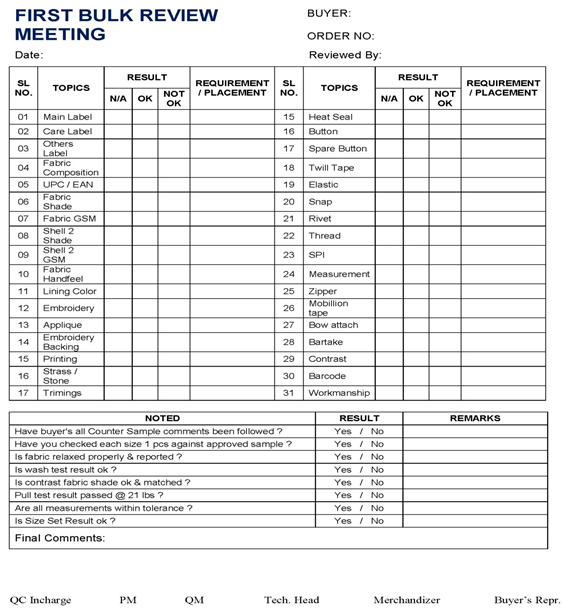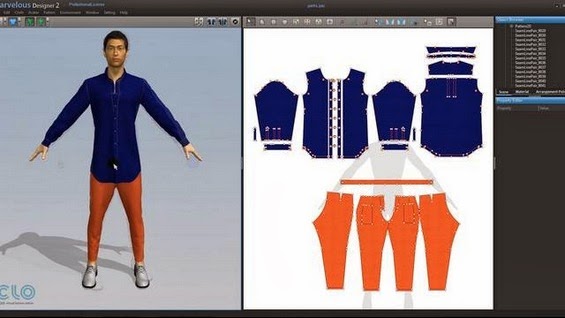Garment Sample Development Process
Garment Sample:
Garment samples are inevitably important and are developed tested before starting the bulk production. It means making a sample of the garment or fabric which requires to be sold. Sampling is one of the main processes in Garment Industry and it has a vital role in attracting buyers. Because the buyers generally places the order after they are satisfied with the quality of the samples.
 |
| Garment Sample Development Process |
Sample Developing Procedure:
1st sample:
The processes of 1stsample are given in bellow:
- Receive spec sheet of garments from buyer.
- Make pattern as per measurement.
- Check the pattern which has made.
- If necessary Check shrinkage, twisting, bowing before pattern makingCutting fabric as per pattern.
- Collect accessories.
- Start sewing.
- M/C specified.
- Check the sample to ensure it, ok.
- Actual size required.
- Actual fabric construction.
- Send it to buyer for approval.
After approving of 1stsample, the work of development sample is start. The process of Development sample is given in bellow.
- Make pattern as per measurement, if buyer change the measurement to observe the counter sample.
- Actual size required
- Check the pattern which has made.
- Collect actual color fabric. G.S.M should be ok.
- Cutting fabric as per pattern.
- Collect actual accessories.
- Start sewing.
- M/C specified.
- Check the sample to ensure it, ok
- Send it to buyer for approval








